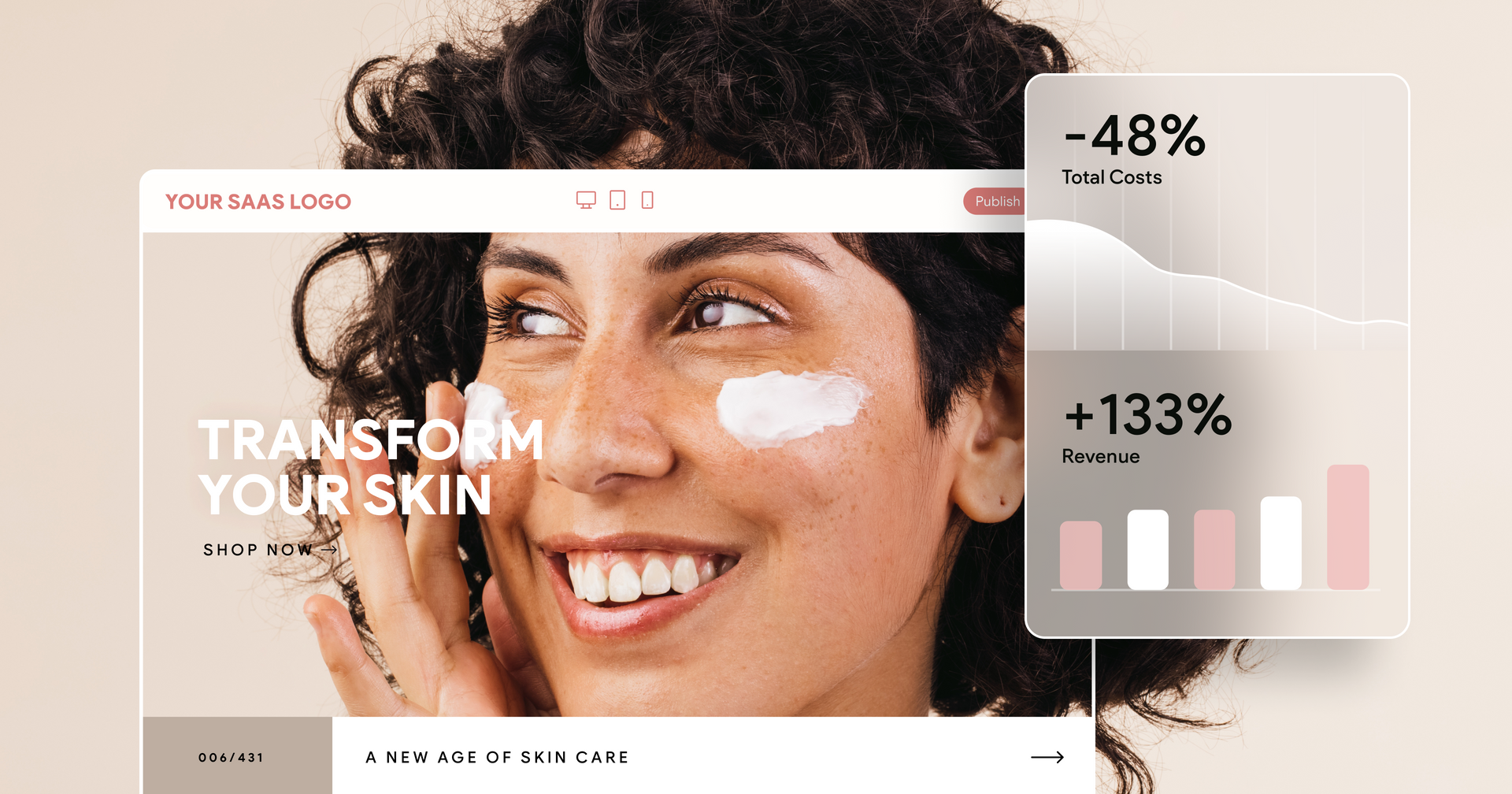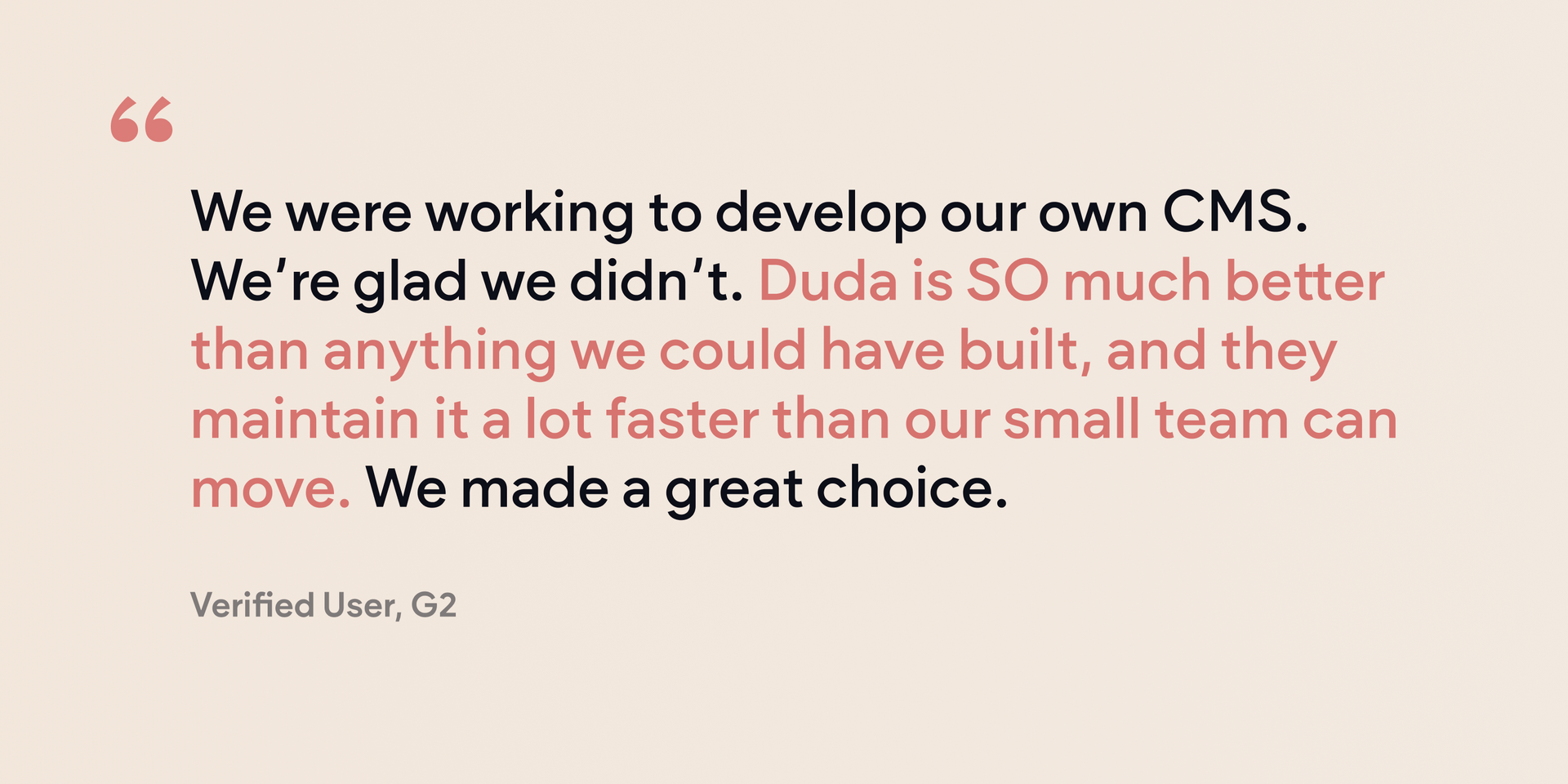See how partnering with a leading solution can pave your path to profitability
Over the past year,
vertical SaaS companies have found themselves needing to pivot quickly in response to rapidly changing markets and growing pressure to become profitable.
Deloitte’s 2023 technology industry outlook report highlights these challenges, emphasizing that tech companies must now “weather a potential economic slowdown by trimming costs, increasing efficiency, and growing revenues…[while] looking for ways to remain innovative and build a strong competitive position for the future.”
Now more than ever, SaaS leaders need to take a closer look at their operational inefficiencies to stay ahead of the game and weather uncertain economic times.
If you offer websites as part of your all-in-one solution, and you’re still using a homegrown or legacy content management system (CMS), you have a
huge opportunity to lower your costs and save an enormous amount of time.
While a homegrown CMS might have been the perfect solution at one time, it has probably become a drain on your resources. From keeping up with ongoing maintenance to troubleshooting performance issues, your team is fighting fires that are taking valuable time away from focusing on your core business.
It’s 2023, and it’s time for smart changes to your strategy–and that likely includes taking a hard look at how you’re building your customer sites. In this blog, we’ll explore the top challenges SaaS companies like you are facing when it comes to website building and how to evaluate the decision between rebuilding your CMS or
partnering with a trusted website builder.
Top challenges
Offering websites can be a powerful revenue-driver for vertical SaaS, but the costs can quickly outweigh the benefits if your website builder is no longer working for you or your customers. After working with hundreds of leading SaaS platform, here are some common frustrations we’ve seen with companies struggling with their existing CMS:
1. High maintenance and resource drain
In many cases, we see teams spending too much of their time and effort maintaining a homegrown CMS–time that could be spent innovating and further developing their core business. While a high-maintenance CMS might still be *technically* functional, keeping up with maintenance headaches becomes an unneeded distraction.
As a result, the total cost of ownership (TCO) of building and maintaining a homegrown CMS is often significantly higher than anticipated, taking valuable time and resources away from the company's core business.
2. Poor user experience
Another big challenge we see with homegrown web building systems is that they often aren’t the most user friendly for the end customer. Companies then have to decide whether to give their end customer access to the CMS and expose them to a frustrating user experience, or have their support team spend their time building customer sites.
Neither situation is a good one–forcing SaaS leaders to make a choice between compromising the customer experience or saddling their teams with even more time-consuming work outside the scope of their core business.
3. Outdated technology and weak performance
Finally, we’ve seen that using outdated platforms can lead to poor website performance for customers. Their sites may not be ranking or converting as well as they should, eroding customer satisfaction and loyalty.
A critical choice: To rebuild or buy?
When one or more of these challenges are present, SaaS companies must choose to either rebuild their CMS themselves or buy a solution. It’s a pivotal decision.
The prospect of rebuilding may seem promising, ensuring a tailor-made solution. However, in reality, rebuilding is a costly, time-intensive process. And, in many cases, it doesn’t actually solve the problems in the long run.
This begs the question: Is rebuilding truly a solution, or are you going to be running into the same problems again–but now at an even higher cost? The expense and uncertainty involved in rebuilding can outweigh the benefits, leaving SaaS companies in a potentially worse situation than they were before.
Redefining the path to success
There's a compelling alternative to the rebuild or buy dilemma: partnering with a best-in-class web building platform. Platforms like Duda offer
fully-integrated, white label solutions designed to empower SaaS companies to focus on their core competencies, while tapping into advanced website creation capabilities.
“We were working to develop our own CMS. We’re glad we didn’t. Duda is SO much better than anything we could have built, and they maintain it a lot faster than our small team can move. We made a great choice.” - Verified User, G2
There are many benefits of adopting a best-in-class web building platform, including:
1. Take back time to focus on your core competencies
Partnering with a white label web building platform frees your team up to focus on what you do best. Liberated from inefficient systems, you are free to focus on strategic growth initiatives and developing innovative solutions that position you for long-term success.
2. Lower your total cost of ownership (TCO)
Maintaining outdated platforms drains resources and quickly can get in the way of your profitability goals. With web building platforms like Duda, a significant portion of the maintenance burden is shifted to the platform provider. They handle tasks like security updates, server maintenance, and performance optimizations, reducing your ongoing operational costs.
In addition, as your organization grows, so will the demands on your CMS. Homegrown solutions tend to struggle to keep up with evolving requirements and can quickly accumulate technical debt, requiring continuous development and maintenance efforts. In contrast, web building platforms like Duda are designed to be scalable and flexible, allowing you to adapt to changing needs without the significant costs associated with custom development.
3. Deliver a seamless, positive customer experience
Best-in-class platforms like Duda prioritize user-friendliness. With a fully white label website builder embedded into your technology platform, your end customer will have a positive end-to-end experience with your brand. They’ll never know it’s not your own CMS. This creates a powerful branding opportunity, enhances customer satisfaction, and drives higher customer retention.
4. Offer your customers industry-leading performance
Website performance is everything, and the only way to drive results for your customers is to employ current best practices and modern technologies. That’s why it can be so powerful to offload this job to a solution partner that gets it–that is constantly iterating their platform in response to the ever evolving digital landscape.
For example, Duda continues to be the industry leader in Google’s Core Web Vitals, and all Duda sites are SEO-ready out-of-the-box. This makes it incredibly easy to deploy top-performing websites for your customers at scale, without requiring significant development or maintenance effort. And you can rest assured that we’re constantly optimizing the platform to meet the latest standards for performance.
5. Empower designers with more flexibility
Web design trends are constantly changing, and so are the technologies that power those trends. Even knowing what features your clients need to build cutting edge websites can be a full-time job, let alone actually building out those features.
That’s where an expert partner comes in. A professional website builder unlocks far more customization capabilities for your clients thanks to a more robust suite of features rooted in decades of industry experience. Things like advanced scroll animations and truly responsive design are often too big of a lift for a homegrown CMS, but not for a company whose primary product is a great website builder.
Partner with a best-in-class web builder
In a landscape characterized by rapid change, vertical SaaS platforms cannot afford to be weighed down by costly and inefficient solutions. The path to profitability and operational excellence lies in embracing best-in-class web building platforms, so you can focus on the areas where you are best-in-class.
Learn more about Duda's integrated website solutions for SaaS.








